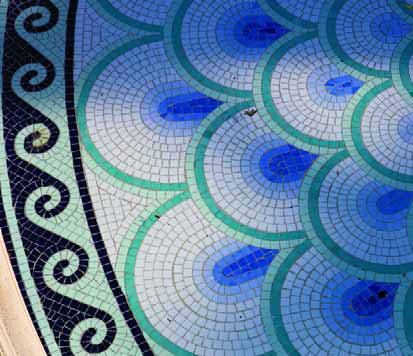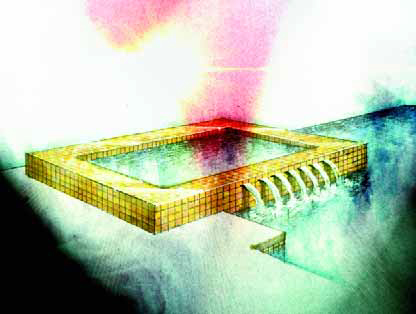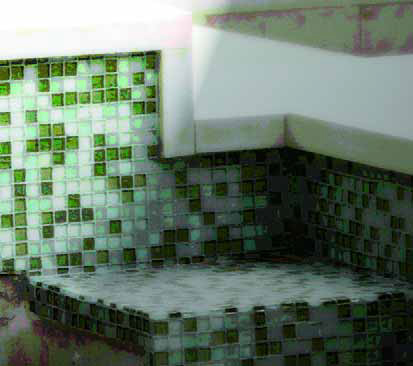materials
It seems that everyone’s talking about “sustainability” these days, with the usual thought being that, as exterior designers, good environmental stewardship must be one of our main missions. But what is sustainability? What do watershapers need to do to encompass this philosophy? As important, what does it mean to our clients, and where are they in all of this? According the numerous sources I’ve consulted, sustainability is defined as striving for the best outcome for both human and natural environments, now and well into the future. In other words, it’s about
Not long ago, I was asked by a reporter from The New York Times to define the main difference between swimming pools now compared to what they were 20 years ago. As we talked, it became clear that she was mostly thinking about technological breakthroughs in pumps and chemical treatments and the like. I confirmed for her that, yes, those products had come a long way. But I wouldn't let her stop there, suggesting that there was much more than a run of technical advancements behind the explosion of interest in watershapes in the recent decades. What we've also been seeing, I said, is a latter-day Renaissance of interest in classical notions of
Not long ago, I was asked by a reporter from The New York Times to define the main difference between swimming pools now compared to what they were 20 years ago. As we talked, it became clear that she was mostly thinking about technological breakthroughs in pumps and chemical treatments and the like. I confirmed for her that, yes, those products had come a long way. But I wouldn't let her stop there, suggesting that there was much more than a run of technical advancements behind the explosion of interest in watershapes in the recent decades. What we've also been seeing, I said, is a latter-day Renaissance of interest in classical notions of
From my first visit, I knew I'd be spending a lot of time here developing the watershapes and landscapes on this amazing site. Set on a bluff in Del Mar, Calif., the whole property slopes down from the street level to the back edge of the property. Beyond was an open space offering uninterrupted views of a river estuary, native coastal scrub studded with rare, indigenous, protected Torrey Pines and the Del Mar shoreline's pounding surf. There were also the spectacularly patterned cliffs at Torrey Pines State Park - a vista and set of colors that ultimately determined material choices for this project. It helped that I was completely at ease with
From my first visit, I knew I'd be spending a lot of time here developing the watershapes and landscapes on this amazing site. Set on a bluff in Del Mar, Calif., the whole property slopes down from the street level to the back edge of the property. Beyond was an open space offering uninterrupted views of a river estuary, native coastal scrub studded with rare, indigenous, protected Torrey Pines and the Del Mar shoreline's pounding surf. There were also the spectacularly patterned cliffs at Torrey Pines State Park - a vista and set of colors that ultimately determined material choices for this project. It helped that I was completely at ease with
As watershape environments become increasingly integrated with homes and overall exterior spaces, increasing numbers of our clients are asking us for associated structures - everything from outdoor kitchens and dining areas to arbors, cabanas and pool houses. In my case, just about every single design I tackle includes one or more of these features. What this means is that we watershapers are effectively being drawn into the world of architecture. While we may not ultimately design or build these structures, at the very least we need to be familiar enough with their ins and outs that we can talk about them intelligently in the context of a given project. I've picked up a lot of basic knowledge through experience and close observation, but I recently decided to seek out a formal reference that would help me give definitive answers to a wide range of these questions, some as simple as inquiries about how much
As watershape environments become increasingly integrated with homes and overall exterior spaces, increasing numbers of our clients are asking us for associated structures - everything from outdoor kitchens and dining areas to arbors, cabanas and pool houses. In my case, just about every single design I tackle includes one or more of these features. What this means is that we watershapers are effectively being drawn into the world of architecture. While we may not ultimately design or build these structures, at the very least we need to be familiar enough with their ins and outs that we can talk about them intelligently in the context of a given project. I've picked up a lot of basic knowledge through experience and close observation, but I recently decided to seek out a formal reference that would help me give definitive answers to a wide range of these questions, some as simple as inquiries about how much
Last time, I described (at great length, as you may have noticed) what happens in the time between my initial phone conversation with clients and a point just ahead of my formal presentation of a design. It's an involved process that uses all of the information I've gleaned from my clients about what they want, what they think they need and what they ultimately expect to have in their backyard environments. It's about understanding the underlying circumstances, deciding what should be done and, finally, assembling all of that insight into a
Last time, I described (at great length, as you may have noticed) what happens in the time between my initial phone conversation with clients and a point just ahead of my formal presentation of a design. It's an involved process that uses all of the information I've gleaned from my clients about what they want, what they think they need and what they ultimately expect to have in their backyard environments. It's about understanding the underlying circumstances, deciding what should be done and, finally, assembling all of that insight into a
With some details, seeing is believing. That's certainly the case with the one we'll consider in this column, where the images will do much of the work in defining a simple but elegant way of making a statement with any raised bond beam or wall. Yet again, it's testimonial to the good things that happen when watershapers know how to control materials and infuse their work with visual appeal. Most of the time when pool people build small or medium-size walls, they'll automatically be topped with some form of coping or capstone - anything from poured-in-place concrete or stone to brick or some pre-fabricated coping. Many of these walls are


















